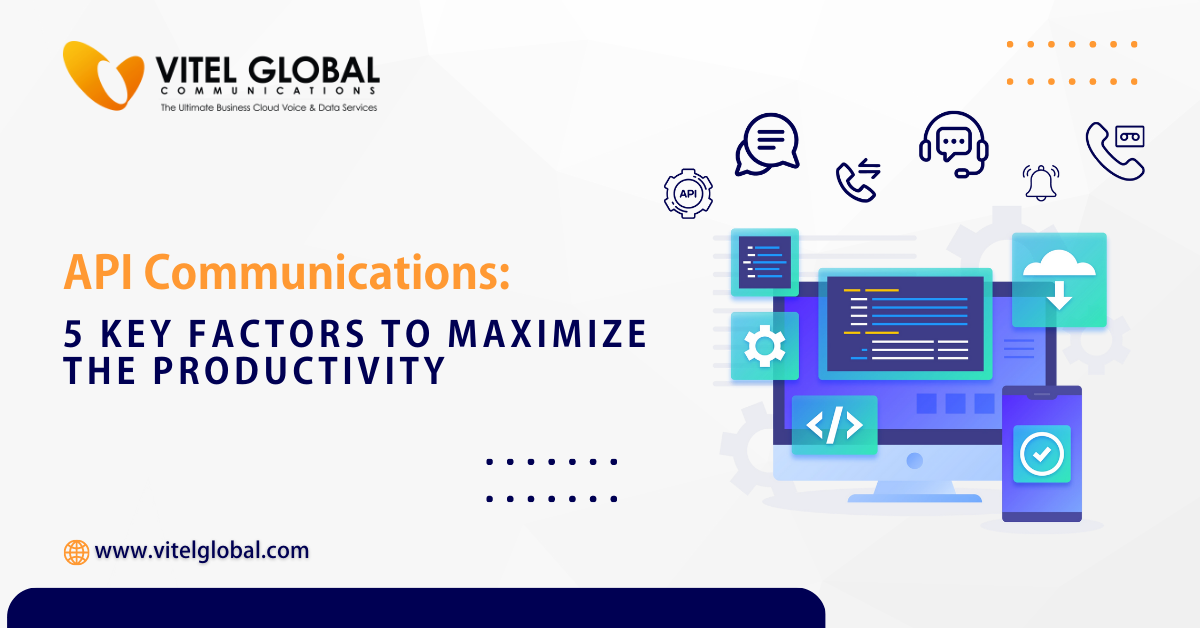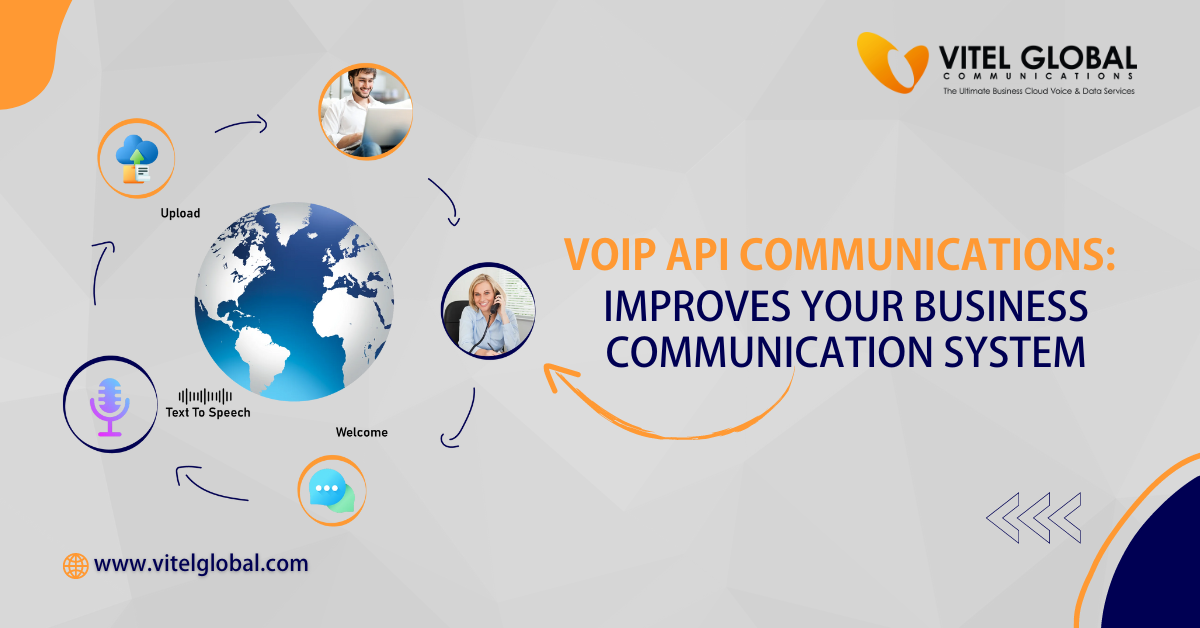API Communications: 5 Key Factors to Maximize the Productivity

5 min read
Are you looking to streamline your API communications and maximize productivity? That’s why we’ve compiled a list of the top 5 key factors that you need to keep in mind when working with APIs. From security concerns to integration challenges, this blog post will provide valuable insights and actionable tips for optimizing your communication strategy. So let’s dive in and discover how you can take your productivity to new heights!
Introduction
An Application Programming Interface is software used to interact with other software. It is a set of programming instructions. They are used when two or more applications need to share data or functionality between them. It can be used internally within an organization or it can be made publicly available for others to use.
Communications are the exchange of data between two systems using an API. This data can be in the form of requests and responses. The request is sent from one system to another system, which then processes the request and sends a response back to the first system.
There are many factors to consider when setting up unified communications, in order to ensure that they are productive. Some key factors include:
The format of the data being exchanged: This should be agreed upon by both parties in advance, in order to avoid any confusion or misunderstanding.
The frequency of communication: This will depend on how often the data needs to be updated or exchanged between the two systems.
Error handling: It is important to have a plan for how errors will be handled so that communication is not disrupted if something goes wrong.
Monitoring and logging: Monitoring and logging can help identify any issues that arise during API communications so that they can be quickly resolved.
Benefits
It can offer a number of benefits to businesses, including increased productivity and efficiency. By automating tasks and processes, businesses can free up resources and time, which can be better spent on other areas of the business. Additionally, it can help to improve communication between different departments and employees, as well as between different business units. This can help to streamline processes and make it easier for employees to collaborate on tasks.
5 Key Factors to Consider When Implementing an API
- Define the purpose of it and who will be using it.
- Plan the Interface design and architecture.
- Choose the right Application management solution.
- Implement security measures to protect your Programming application.
- Monitor and test your App regularly.
Security
It is a vital part of any business, and it is important to consider the security of these communications when planning your business strategy. There are a few key factors to consider when ensuring security:
- Authentication – Make sure that only authorized users can access your API communications. This can be done through various methods such as user IDs and passwords, or tokens.
- Encryption – Encrypt your communication data to protect it from being intercepted and read by unauthorized individuals.
- Access Control – Limit who has access, and what they can do with that access. This will help prevent unauthorized changes or misuse of data.
- Auditing – Keep track of all activity within your communications, so that you can identify any potential security breaches quickly and efficiently.
Usability & Functionality
It is a critical aspect of any software development project. By definition, Application Programming Interfaces are interfaces that allow different software applications to communicate with each other. In order for two pieces of software to be able to communicate, they need to have a shared language that they can both understand.
It acts as a translator between two pieces of software, allowing them to communicate with each other regardless of the underlying programming languages or platforms. Without it, developers would need to write custom code to integrate different software applications. This would be time-consuming and error-prone, and would ultimately limit the potential for innovation and collaboration.
With this, developers can focus on building great user experiences rather than spending time on low-level technical details. Additionally, well-designed APIs can result in increased productivity by allowing developers to reuse existing code libraries and tools.
When designing it, there are a few key factors to consider in order to maximize growth:
- Usability & Functionality: It should be easy to use and should support the functionality that developers need. It should also be well-documented so that developers can quickly get up-to-speed on how to use it.
- Performance: It should be designed for performance, with well-defined methods for handling errors and Edge cases.
- Security: It should be secure, with authentication and authorization mechanisms in place
Scalability
As your business grows and changes, so will your communication needs. It’s important to consider how easily your app interface can be scaled to accommodate future growth. Make sure to select the best that can handle the number of requests you anticipate making, as well as any potential spikes in traffic. Additionally, consider how easy it is to add new users or features to your cloud-based unified communications platform. The last thing you want is to have to rebuild your entire system every time you need to make a change.
Documentation & Support
There are a few key factors to consider in order to maximize productivity. First and foremost, documentation is key. A well-documented programming interface will save developers a lot of time and frustration in the long run. Furthermore, support is also important. A good support team can help developers troubleshoot issues and answer any questions they may have.
Versioning & Updates
One of the key factors to consider is versioning and updates. Keeping your Application interface up-to-date is essential to maintaining a productive workflow. Here are a few things to keep in mind when it comes to versioning and updates:
- Use a consistent naming convention for your versions. This will make it easier to track and manage changes over time.
- Make sure to document all changes made to your App. This will help others understand what has changed and why.
- Test it thoroughly before releasing any updates. This will ensure that the changes you’ve made don’t break anything in the process.
How to Test?
In order to test it, you will need to use a tool that can make HTTP requests. There are many different tools available for this purpose, but we recommend using Postman.
Once you have installed Postman, you will need to configure it to send requests to your application interface. To do this, open Postman and click on the “New” button in the top left corner. In the “New Request” window that appears, select the “HTTP Request” method and enter your API’s URL into the “Request URL” field.
Next, you will need to specify the headers that should be sent with your request. Click on the “Headers” tab and enter the name of each header into the “Name” column and its value into the “Value” column. Click on the “Send” button to send your request.
If it is working properly, you should see a response appear in the “Response” section of Postman. If there is an error, you will see an error message instead.
Conclusion
In summary, for an organization to maximize productivity, it is essential to consider five key factors: security protocols, integration capability, scalability and performance requirements, user experience and cost-effectiveness. With these considerations in place, organizations can ensure that their API communications are optimized for optimal productivity.
Published: April 24th, 2023
Subscribe to Our Latest Updates
Get monthly product and feature updates, the latest industry news, and more!





